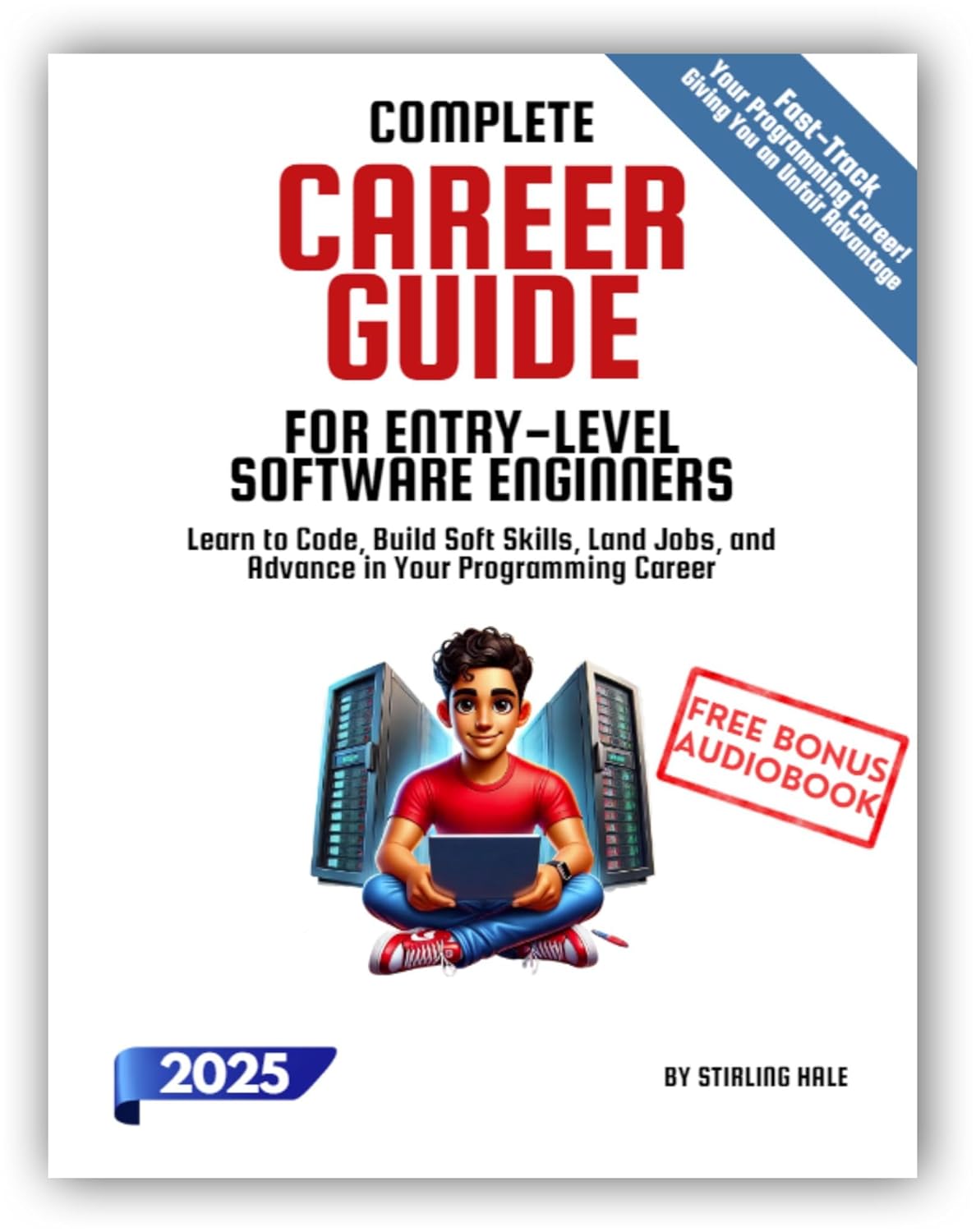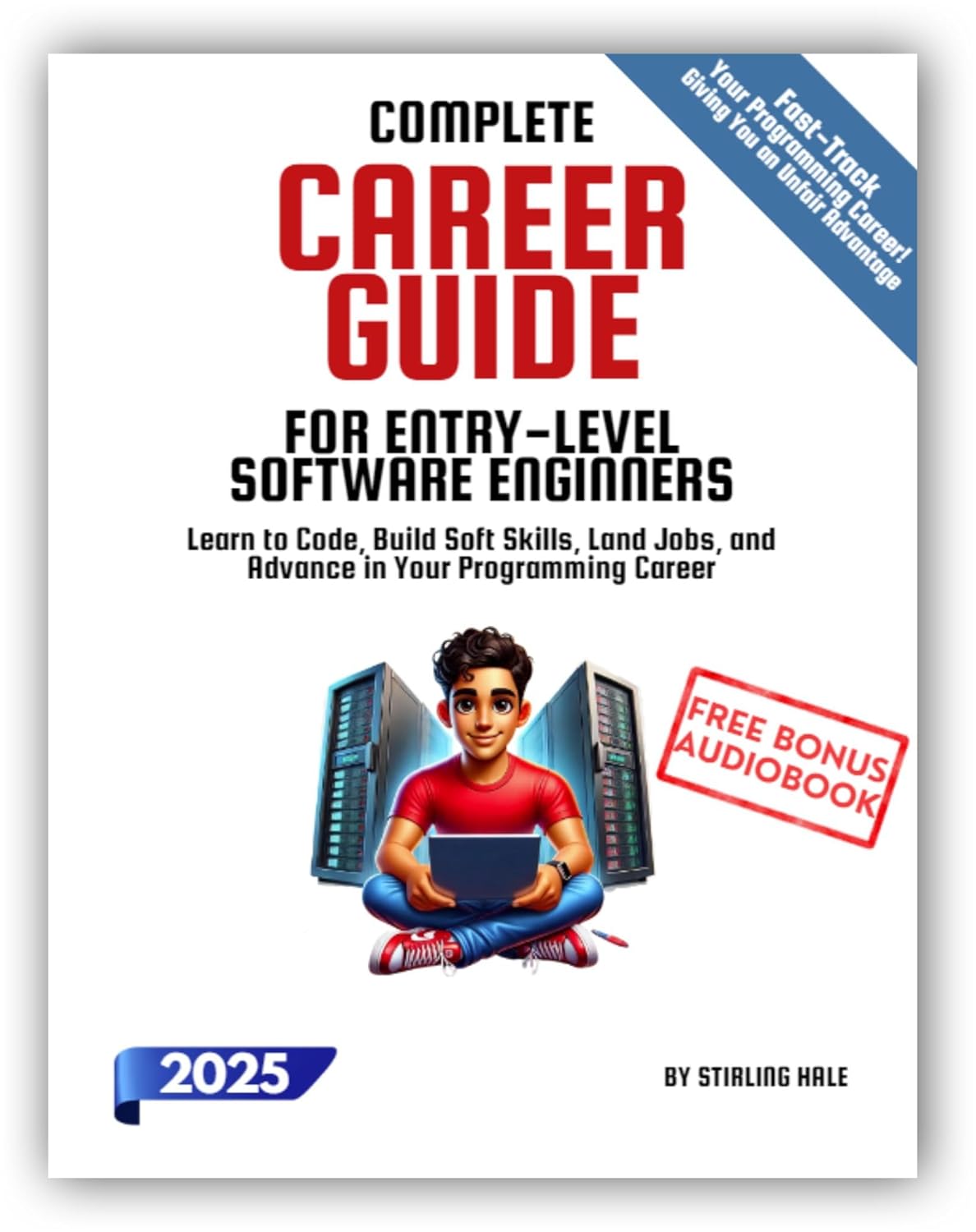
What does it take to kickstart a career in software engineering?
Understanding the Product
The “Complete Career Guide for Entry-Level Software Engineers” is designed with beginners in mind. It’s not just about learning to code—it’s about the whole package that ultimately leads to a successful career in technology. I found this Kindle Edition to be a mix of straightforward coding tutorials and valuable insights into soft skills that every entry-level software engineer should master.
Why This Guide Stands Out
One of the first things that caught my eye was how the guide is well-structured. It doesn’t just throw technical jargon at you; instead, it breaks down complex concepts into digestible pieces. This makes it incredibly suitable for absolute beginners who may feel overwhelmed at first.
The Coding Lessons
There’s a solid focus on coding fundamentals. I appreciated how the guide lays out various programming languages and technologies that are essential for entry-level positions. For instance, it covers:
| Programming Language | Key Concepts Taught |
|---|---|
| Python | Syntax, loops, and functions |
| Java | Object-oriented programming and APIs |
| JavaScript | DOM manipulation and event handling |
Each section has hands-on exercises that allow me to practice coding in a structured manner. This hands-on approach is invaluable, as it reinforces what I’ve just learned.
Building Soft Skills
One standout feature is the emphasis on soft skills. I used to think coding was all there was to the job, but this guide opened my eyes to the importance of things like communication, teamwork, and problem-solving. It includes tips on how to effectively collaborate on projects, which is a game-changer since most software development occurs in teams.
| Soft Skill | Importance |
|---|---|
| Communication | Facilitates clear project discussions |
| Teamwork | Essential for completing coding projects |
| Problem-solving | Helps tackle unexpected issues during development |
Job Search Strategies
The guide doesn’t stop at skills; it also covers the job search process. It’s refreshing to find practical advice on creating a standout resume, preparing for interviews, and even negotiating job offers. The section on networking was particularly useful—who knew that tapping into my social connections could be such a powerful tool?
Coding Environments and Tools
Technology is constantly evolving, which can be daunting. However, this guide does an excellent job of summarizing the different coding environments and tools that I might encounter as a software engineer.
Development Environments
Understanding the right development environment can make a huge difference in productivity. The guide introduces various IDEs (Integrated Development Environments), which include:
| IDE | Features | Language Support |
|---|---|---|
| Visual Studio Code | Extensions, supported plugins, and debugging | JavaScript, Python, Java |
| IntelliJ IDEA | Excellent for Java development | Java |
| PyCharm | Tailored specifically for Python developers | Python |
I found it helpful to have comparisons between these environments laid out so I can choose what fits my style and project needs.
Hands-On Projects
The guide emphasizes the importance of building a portfolio, which I realized is essential for impressing future employers. There’s a section tailored for hands-on projects that can showcase my abilities.
Types of Projects
Some examples of projects I was encouraged to attempt include:
| Project Type | Skills Developed |
|---|---|
| Basic Website | HTML, CSS, and JavaScript |
| Simple Calculator | Java, handling user inputs |
| To-Do List Application | Python, CRUD operations |
Completing these projects not only enhances my coding skills but also gives me tangible examples to discuss in interviews.
The Importance of Continuous Learning
What’s great about this guide is that it acknowledges that learning doesn’t stop after landing a job. It stresses the need for continuous learning to keep up with industry developments.
Resources for Continued Learning
The guide provides a list of websites, books, and communities to help enhance my skills:
| Resource Type | Examples |
|---|---|
| Online Courses | Coursera, edX, Codecademy |
| Books | “Clean Code” by Robert C. Martin |
| Community Forums | Stack Overflow, Reddit’s r/learnprogramming |
This section inspired me to commit to lifelong learning and pushed me to become proactive about my growth.
Networking Tips
Feeling unsure about how to network was another hurdle I faced. This guide offers practical advice on building connections with industry professionals, which can be invaluable for landing a job.
How to Network Effectively
Here are a few networking tips I picked up from the guide:
| Networking Strategy | Description |
|---|---|
| Attend Meetups | Meet local coders and industry experts |
| Join Online Groups | Connect with peers on platforms like LinkedIn |
| Reach Out for Informational Interviews | Gain insights and advice from experienced professionals |
These practical strategies have enabled me to reach out confidently, knowing the importance of expanding my professional network.
Interview Preparation
The moment of truth: the interview. This guide leaves no stone unturned in preparing me for this crucial phase.
Key Areas of Focus
The guide outlines essential areas to prepare for during an interview:
| Focus Area | Content |
|---|---|
| Common Technical Questions | Data structures, algorithms |
| Behavioral Questions | Team dynamics, conflict resolution |
| Coding Challenges | Live coding sessions and whiteboard problems |
Having this breakdown laid out helped ease my anxiety about interviews knowing I had strategies to practice.
Salary Negotiation
I used to think salary negotiation was a daunting topic, but this guide takes a friendly approach.
Understanding Salary Ranges
It’s important for me to know what the typical salary patterns look like for entry-level software engineers. The guide provides insights into negotiation strategies, including:
| Location | Average Salary |
|---|---|
| Silicon Valley | $100,000 – $120,000 |
| New York | $85,000 – $110,000 |
| Remote Positions | $70,000 – $100,000 |
These insights armed me with the knowledge I need during negotiations, so I present a case that reflects my worth and the market.
The Work Environment
After securing a job, understanding your work environment can be just as important. This guide gives me practical insights into what to expect.
Types of Companies
There’s a difference between working for a startup versus a large corporation. Here’s a quick comparison:
| Type of Company | Work Environment | Job Security |
|---|---|---|
| Startups | Fast-paced, high-risk | Varied, often less stable |
| Large Corporations | Structured, defined roles | More secure, larger networks |
Understanding this helps me to align my job aspirations with what I truly want from my career.
Achieving Work-Life Balance
In the tech world, balancing work demands and personal life can be tricky. Fortunately, the guide touches on this topic too, highlighting ways to maintain that balance.
Tips for Balance
A few suggestions I picked up include:
| Strategy | Description |
|---|---|
| Set Boundaries | Learn when to unplug |
| Time Management | Use productivity tools like calendars |
| Regular Breaks | Avoid burnout by pacing work sessions |
These strategies are essential for sustaining a long, fulfilling career without feeling overwhelmed.
Conclusion
Reflecting on the entire guide, I realize it serves as a comprehensive roadmap for anyone stepping into the world of software engineering. From coding basics to soft skills, job hunting, and career progression, it has equipped me with the knowledge and skills I need.
I appreciate that it’s written in an accessible tone. This is something that makes information more digestible without compromising on the depth of knowledge. Coupled with practical projects, real-world advice, and an emphasis on lifelong learning, I genuinely feel empowered to embark on this new journey.
So, if you’re considering a career in software engineering, this guide could be the first step in building a fulfilling career. After all, gaining the right skills and mindset is crucial, ultimately preparing me for the exciting challenges ahead.
Disclosure: As an Amazon Associate, I earn from qualifying purchases.

